Our Family History - La
Paz, Bolivia - October 1-10, 2000
Drs. Frank and Bessie Beck (Bindy's grandparents)
Nelson Beck (Bindy's father)
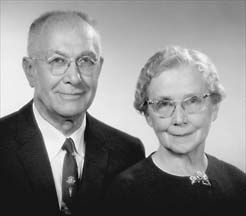
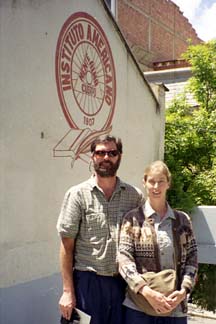
La Paz American Institute
-or- El Collegio Instituto Americano
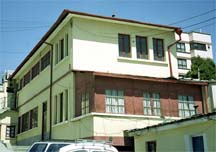
"We went through an unlocked gate from the school grounds to the front of the old clinic. In the parking area of the clinic there was a beautiful landscape view of Mt. Illimani."
.
. . for complete story
and more photos
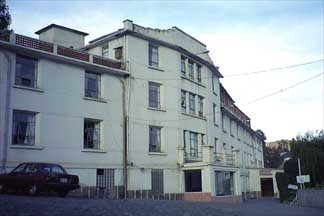
.
. . for complete story
and more photos
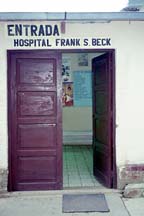
The Frank and Bessie Beck left Ancoraimes in mid-1964 when Dr. Beck was 76. They returned in 1966 to visit mission medical work and went to the hospital he had planned in Ancoraimes which was now finished and named after him. It had twelve patient rooms and a small operating room.
Public health care program known today as Curamericas in the United States and Consejo de Salud Rural Andino (CSRA) in Bolivia.
.
. . for complete story
and more photos
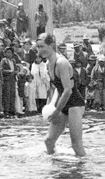
Dad after race
exact width of the straits, but it takes a
motor launch a half-hour to cross it."
.
. . for complete story
and more photos
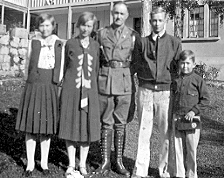
In 1932, with a war being waged between Bolivia and Paraguay, Beck was asked to provide medical assistance for tile Bolivian Army. The war was fought in a disease-cursed jungle area called the Gran Chaco-more realistically dubbed "the Green Hell." Soldiers died like flies from tuberculosis, malaria, intestinal infections. Beck, burning with malaria himself, fought to save casualties of both germs and bullets. He could operate only between four and six o'clock in the morning, after the clouds of mosquitoes had dispersed and before swarms of vicious gnats took over. For his unsparing labors during the fighting he was awarded the "Condor of the Andes," the highest honor that is ever given to foreigners. He was recalled to La Paz to take care of a maternity case of the wife of President Tejada-Sorzano.
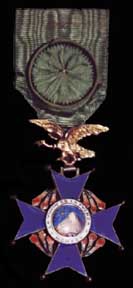
In 1940, Dr. Frank S. Beck received "The Condor of the Andes" from the Bolivian government for his medical work during the Chaco War with Paraguay and his founding of Clinica Americana Hospital.
This is the highest decoration
given in Bolivia.
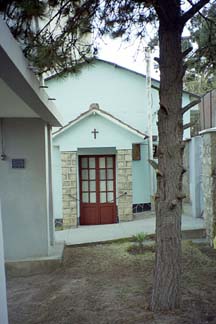
Mina Leyton showed us the Methodist church across the street from the Hospital Metodista. There were two main buildings. The original church, (see photo) which is currently being used as a childcare center and the new church. The original church is where Dad would get elbowed in the ribs by Doc when his dog would come in the church during Sunday's service looking for him.
We visited the church on the corner near the Instituto Americano, but Nat Robison felt that this church was rebuilt in the 1950s.
Bessie states: "There was an old cemetery on a hill above the hospital site (Obrajes), and you gathered some old bones that were protruding from the ground. You gave these to the nursing school for their studies in anatomy. You kept for yourself a skull that you put on the window sill as a special protection. You knew that the Indian workmen were very superstitious and they would not bother anything you had while the skull was there. The skull was also used to secure the autographs of all your friends. You even secured an autograph of a movie star who was visiting in LaPaz."
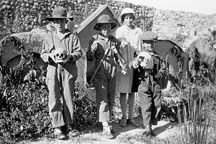
Dad (far right) holding skull
with Miriam (next to Dad)
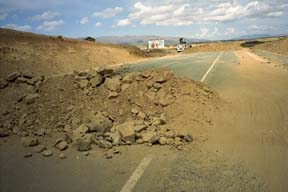
.
. . for complete story
and more photos

Tuesday - visit Instituto Americano with Martha Loetz (Emily Medina's sister) and Markets near San Francisco Church
Wednesday - visit Methodist offices, Instituto Americano, and Andean Rural Health Care offices with Nat Robinson, director of ARHC
Thursday - visit US Embassy and Beatice Fiorillo's house (friend of Sylvia Cohn)
Friday - visit Hospital Metodista with Mina Leyton (Ruth Fuentes' sister) and Martha Loetz. Bolivia's 3 week Strike between the Government and Campesinos ends.
Saturday - Tour of Altiplano starts with William Pedro of Apa Apa Trek
<Back to South America
<<Back to Main homepage of Earthtravel